Maidstone, Saskatchewan
I made a solo trip to Saskatchewan this week for some sibling therapy.
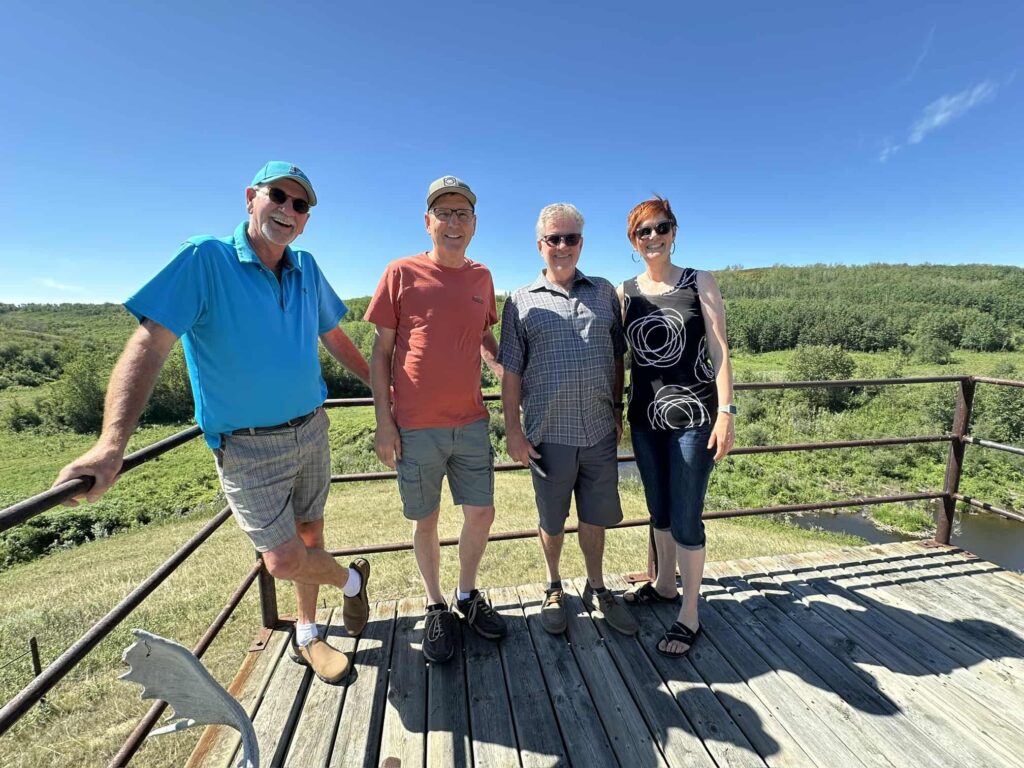
I try to reconnect with my brothers and my sister regularly, for mental health reasons.
It’s not that my siblings give me particularly good advice or emotional support, it is simply that all three of them are just a wee bit crazier than I am, so I always feel better by comparison.
This trip, we worked in a visit with one of my dad’s cousins, Keith Paton and his wife Claire, in Maidstone, SK.
Keith: Bruce McFadyen made those bluebird houses. He built 16,000 of them after he retired and put them on fences all over the municipality. Bruce can remember where every one of them is.
Claire: Keith, Bruce McFadyen died some time ago.
Keith: Oh, then I guess he can’t remember where they are.
Keith and Claire have lived in west-central Saskatchewan all their lives.
Claire taught school at this one-room schoolhouse for six years; she was 19 when she took the job.
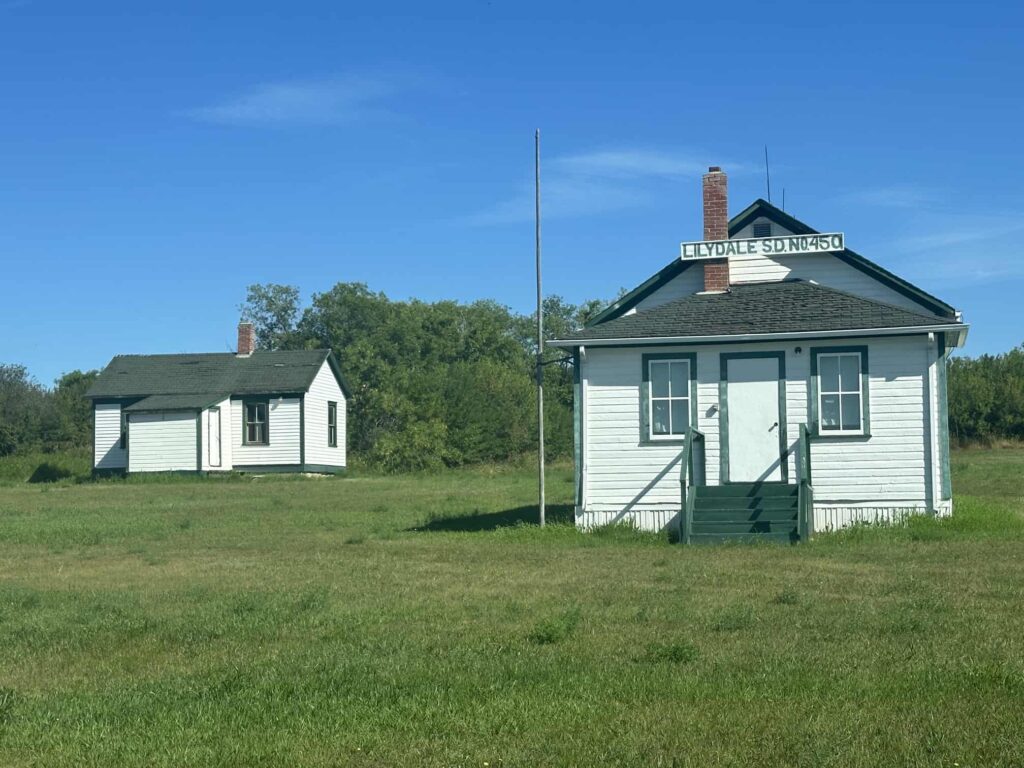
One summer, while Claire was teaching school and living in the adjacent house, a construction crew showed up to build this bridge across the road from the school.
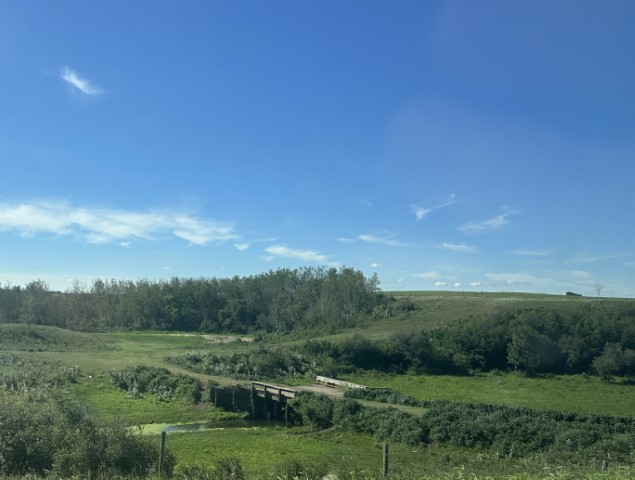
One of the crew members, charged with driving piles for the bridge foundation, noticed the pretty schoolteacher across the road.
Claire the teacher and Keith the bridge builder, have been married for 60+ years.
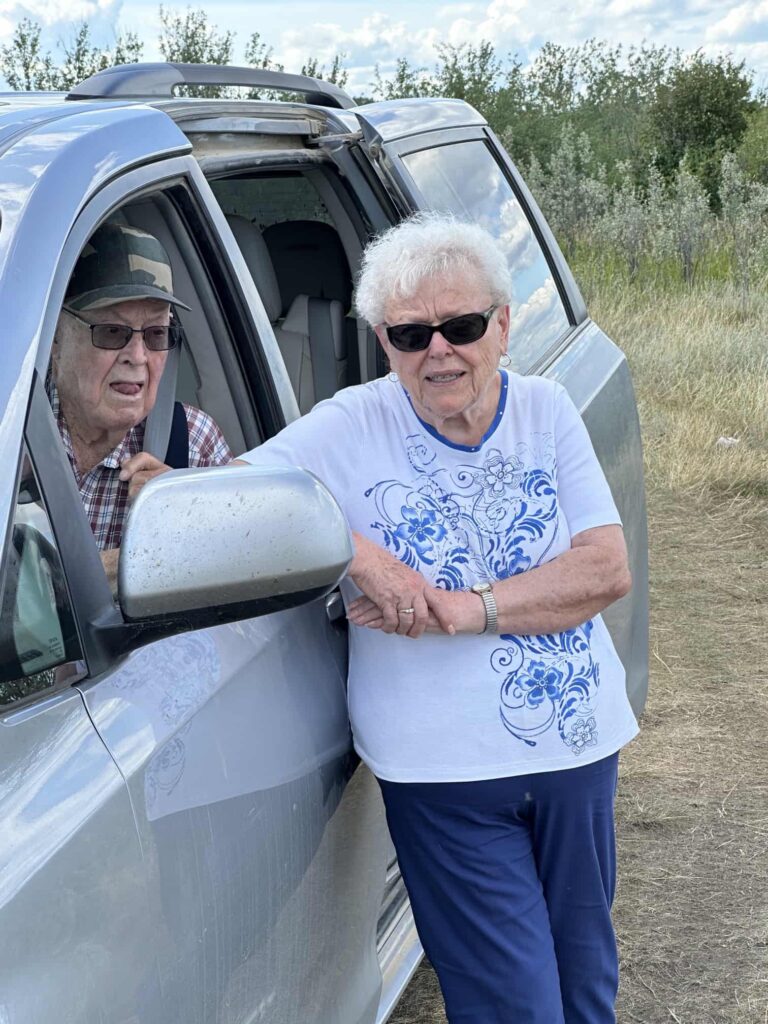
Keith and Claire went on to raise two children and built a prosperous farm, not far from where they met.
My I-phone takes quality panoramic photos, but there is no camera on earth that can capture an image that will include 6500 acres of land and crops, or catch the contour of the land or the enormity of the sky. My camera image also doesn’t include all the giant equipment, multiple service buildings, and grain storage facilities Keith and Claire built.
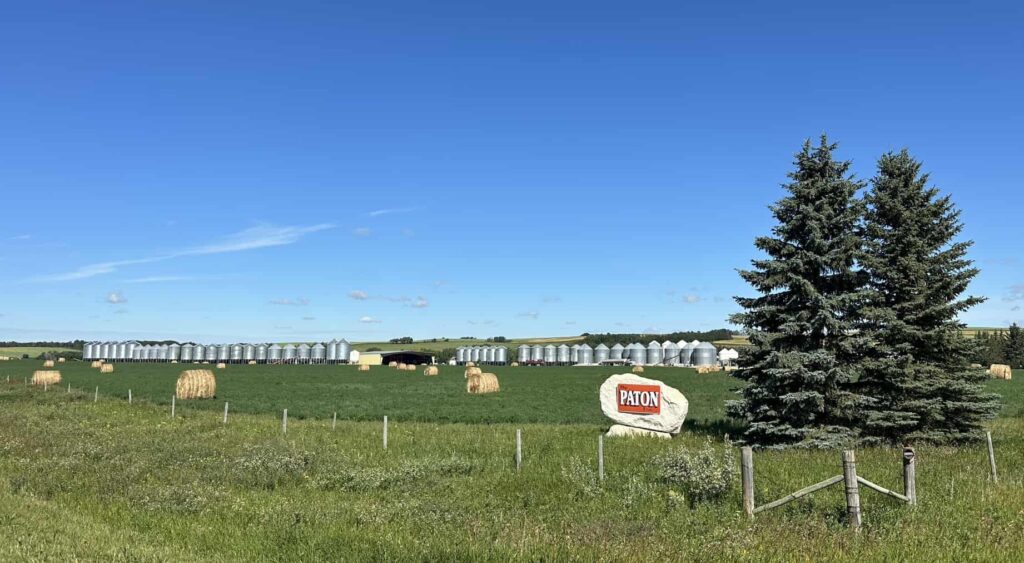
A camera will especially not capture the hard work and dedication Keith and Claire and their family, have invested in this farm.
While Keith and Claire were building the farm and a life, they also helped build a community.
Keith: I was on the hospital board for a while. They were planning to put a flower bed right in front of the main entrance. I told them, “If I break my leg, I don’t want to wade through goddamn geraniums to get to the hospital door.”
Keith: They just about threw me off the board for swearing, but I don’t put up with bullshit. And you don’t see any flowers blocking the door, do you.
Keith’s sister June Paton-Hope and her husband Jim (on the left) also met us in Maidstone.
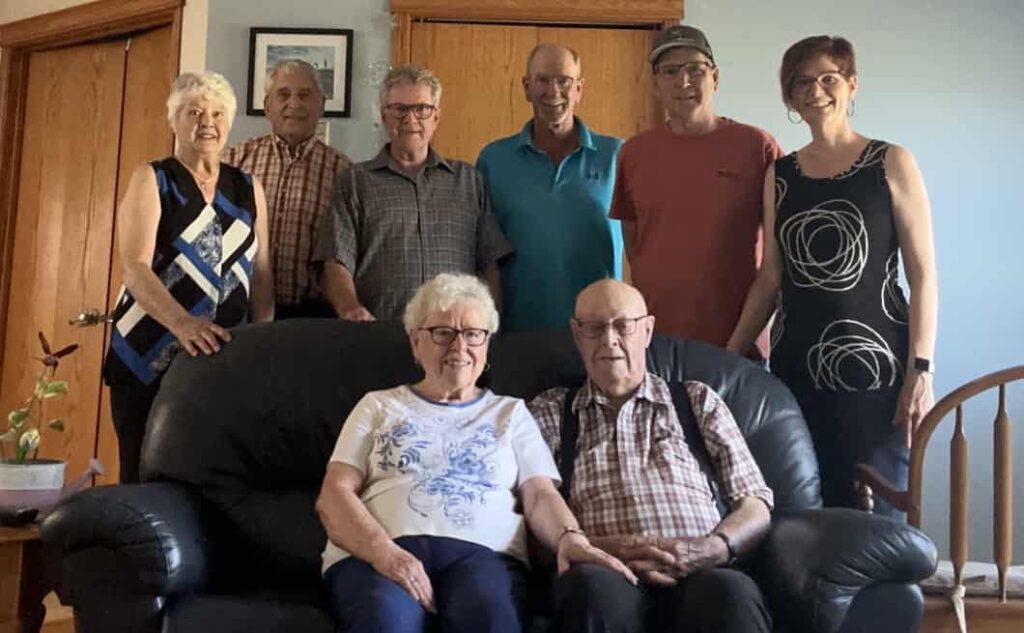
June had us all tell our family/life story, which prompted a lively and entertaining discussion.
When it came her turn, June told her and Jim’s heartwarming story of five children, 11 grandchildren, and 11 great grandchildren. June expressed the profound joy of raising a big family. She didn’t exclude the heartache caused by the premature death and disabilities of loved ones.
June’s storytelling created an aura, an intense feeling of just how wonderful, and painful, life can be.
It was sad to part from our cousins, especially after the umpteenth home-cooked meal.
My siblings and I spent the evening rehashing the events of the day. We unanimously agreed that we are fortunate to have Keith and Claire, June and Jim in our greater family circle. In a single day of getting reacquainted we shared their pride of community, their family, their friendships, life, love, and loss. All because we happen to have the same last name.
On the long road home today, I may still be a bit crazy, but it’s good to know that I’m…
…not alone.
No Paton family gathering ever took place without a history lesson, so here are a couple of things we learned while we were touring around Maidstone.
The North Saskatchewan River flows just north of Keith and Claire’s place. They took us to a scenic overlook at “Pine Island”, a wide spot in the river.
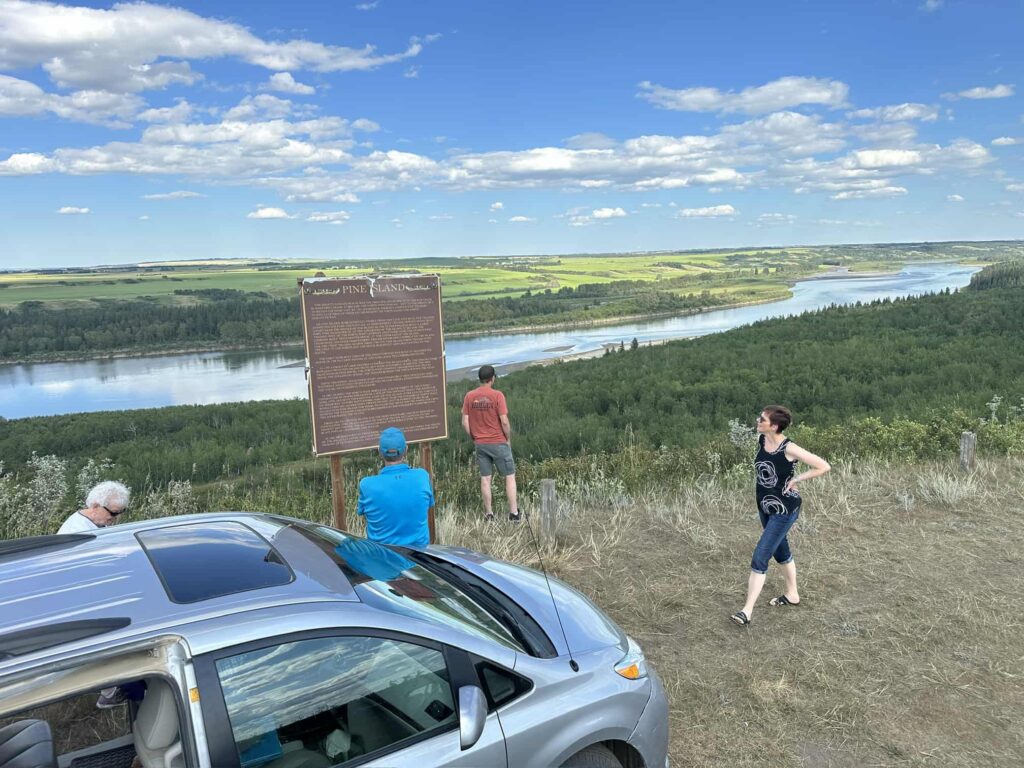
The site has historical significance in that it is located on the boundary of the Cree Nation to the North and the Blackfoot and Sioux to the South.
Between 1786 and 1793, the island was occupied by five rival fur trading companies, sometimes all at the same time. The fur traders competed with one another for rights to furs supplied by the various native groups, often resulting in violence among the traders and with the native people. In 1793, a band of Indians attacked the forts resulting in them being abandoned and burned to the ground.
The steep banks of the North Saskatchewan River, where we stood today, once echoed with the shouts and gunshots of warriors, traders, and river pirates, all intent on exploiting the beaver for its pelt.
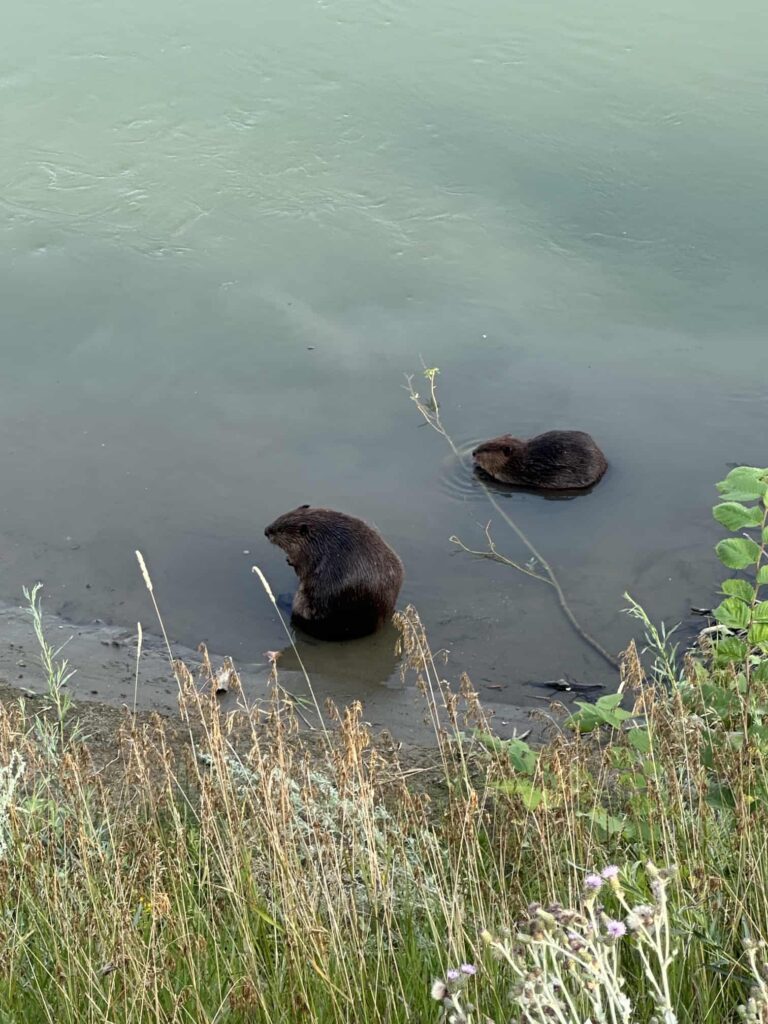

The ancestors of this pair escaped capture in the 1700s. They keep the riverbanks of the North Saskatchewan stripped of tree growth to this day.
Another fascinating piece of history occurred in a small community north of Maidstone.
In 1909, several families, all descended from African/American slaves, traveled north from Oklahoma and settled in the area. The black pioneers farmed, raised livestock and built a thriving community around Shiloh Baptist Church.
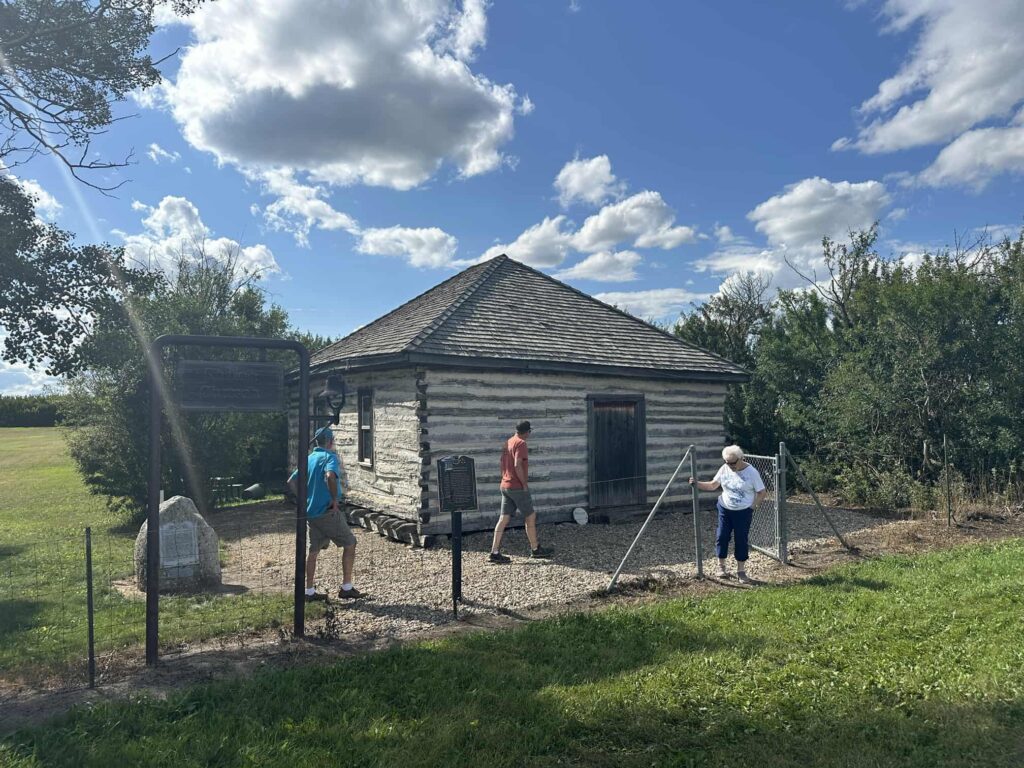
Cousin Claire was born near the church and went to school with many of the children from the black community.
Claire gave us a tour of the church and the graveyard, built by Saskatchewan pioneers whose origins were in Africa. Claire conveyed to us some of the fond memories she had, of living and teaching among Saskatchewan’s black community.
Claire recently spoke at the funeral of one of the former members of the Shiloh community whose body had been returned there for burial. Claire was able to tell the family about life around Shiloh Church in the early years.
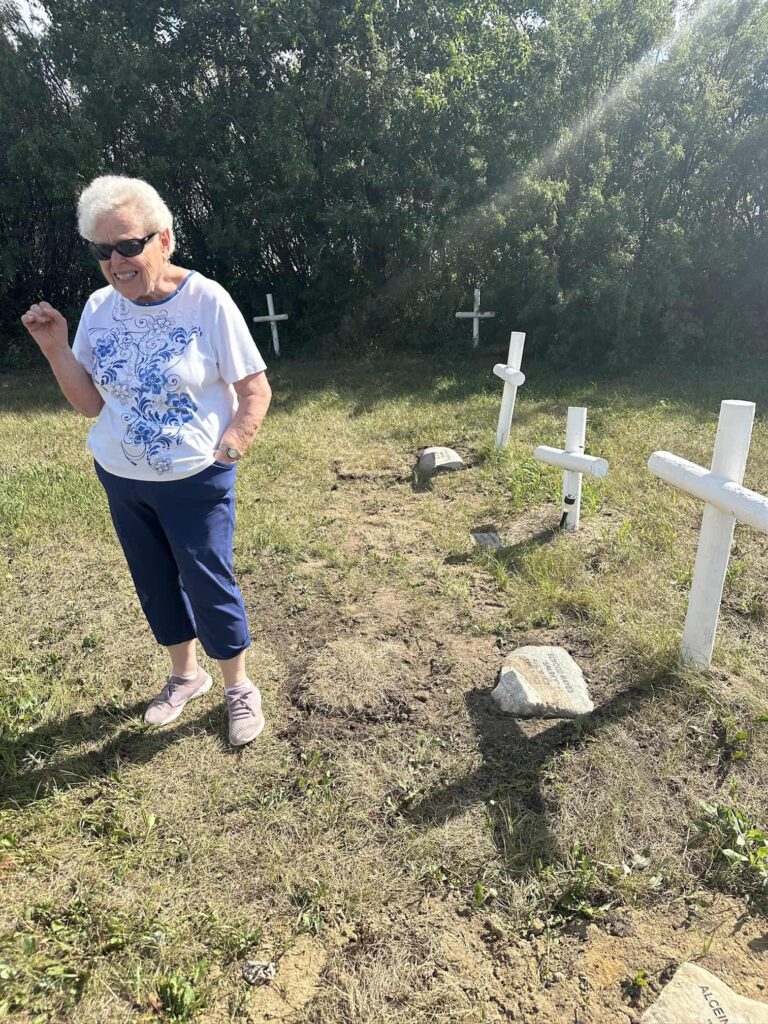
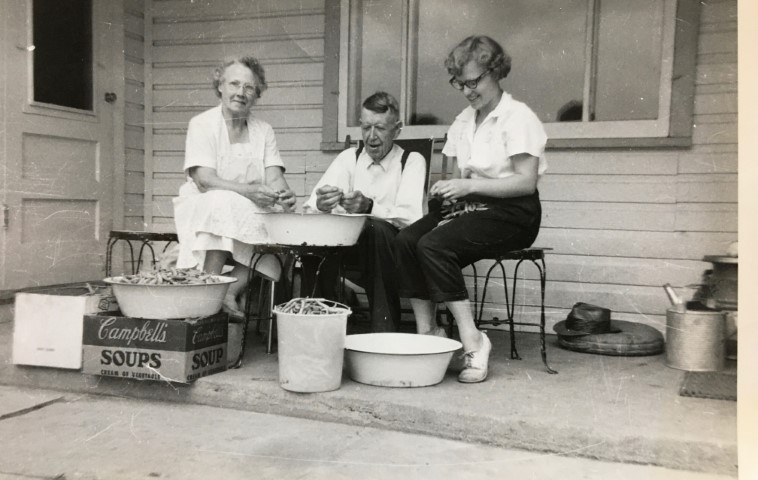
William and Jemima Paton shucking peas, with Claire Paton, c1960, Maidstone, Saskatchewan.


Barb pston
Awesome and interesting write up
Russ Paton
Thanks Barb! The west-central Patons are all doing well.